Your Rotator Cuff muscles are the most important muscles for your shoulder joint to do its job. No wonder that a Rotator Cuff muscle strain is one of the main reasons for shoulder pain. Not only do your Rotator Cuff muscles provide movement of your shoulder and arm, they also stabilize your whole shoulder joint. Pain when lying on your shoulder or with overhead movements, like washing your hair, are the first signs of an injury to one of these Rotator Cuff muscles.
The Anatomy of your Rotator cuff
The rotator cuff is made up of four separate muscles connecting your shoulder blade, or scapula, to your upper arm, the humerus. More specifically, the tendons from these muscles attach to the top, rounded part of you humerus, forming the biggest part of your shoulder joint. The other part is formed by the glenoid, which is actually part of your shoulder blade. The glenoid and top of the humerus form a shallow ball-and-socket joint. The fact that it’s shallow, makes it relatively unstable, when compared to other joints like your knee or elbow.
The four muscles that make up your rotator cuff are:
- Supraspinatus which lies above the small bony bridge of your shoulder blade
- Subscapularis underneath the shoulder blade
- Infraspinatus below the bony bridge of your shoulder blade
- Teres minor just below infraspinatus.
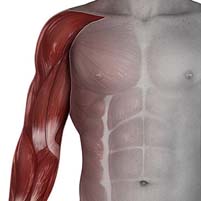
What does it do?
As mentioned before, your shoulder is a shallow ball-and-socket joint. That’s why your rotator cuff muscles are so important. These four muscles give your shoulder stability, acting like a washer to keep the ball in the socket, whilst still allowing movement in any and all directions. Without them, your shoulder would be weak, unstable and nothing more than an attachment between your neck and elbow.
Although the muscles act together for stability, each muscle is responsible for a specific movement when acting on its own.
- Infraspinatus rotates your shoulder to the outside, away from your body.
- Supraspinatus lifts your arm up to the side, like when you are nudging a friend.
- Subscapularis rotates your shoulder towards your body; like the downward action when throwing a ball.
- Teres minor assists the Infraspinatus muscle, and also holds the upper arm bone down when your arm moves to the side
The Rotator Cuff muscles are used a lot in over-head sports such as tennis, cricket and swimming. They also play an important role in every day activities such as brushing your hair or putting on a shirt. Simple things, like reaching out of your car window to get a parking ticket or reaching up to a cupboard to get a coffee mug, become painful actions when you have a Rotator Cuff muscle tear.
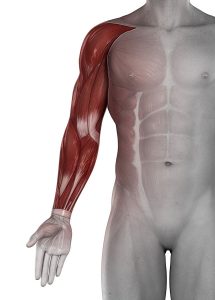
How did I strain my Rotator cuff muscles?
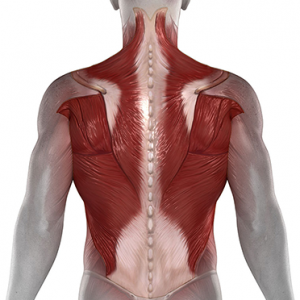
Acute tears
These tears are due to accidents or falls, something that you remember doing. Falling onto an outstretched arm or breaking your collar bone can also leave you with a torn rotator cuff muscle. Quad bikers, mountain bikers or elderly people are the most common individuals to suffer this sort of injury.
An audible snap may be heard at the time of injury, but this is quite uncommon because there is almost always another injury that you will notice before the muscle tear. The swelling of the tendons and muscles will make movement of your injured shoulder very painful.
Degenerative tears
When you have this type of rotator cuff tear, you probably won’t be able to tell how or when it happened. This injury is caused by continuous loading of your shoulder, as with certain sport activities or occupations. A constant wearing down of the tendon will eventually cause a muscle tear. The dominant shoulder is at highest risk to have a muscle tear because the most load will be going through that shoulder joint.
In elderly people, a lack of blood supply may also be a leading cause of Rotator Cuff muscle tears, as the tendons do not receive enough blood to support the healing process.
Impingement
The one finger like bone at the front top of the shoulder blade can be a bit longer in some individuals. Every time you lift your arm, this bone spur chafes your Rotator cuff tendons, causing a muscle tear.
Even without having that bone spur you can have shoulder impingement due to a sustained poor posture or weak upper back muscles. If you have long working hours and a poor office chair, your shoulders will always drop forwards. This poor position puts a lot of pressure on the tendons. The constant irritation leads to inflamed tendons that eventually becomes a Rotator Cuff muscle strain.
Causes of Rotator cuff muscle tears
Trauma:
- car accidents (direct impact, shoulder dislocation)
- sporting injuries (rugby tackles, skiing falls)
- falls (down the stairs, on outstretched hand)
- heavy lifting
Overuse:
- repetitive movements in sport (Volleyball or tennis serve, cricket bowling or swimming)
- over-head occupation such as a painter, gardener or hairdresser
- neglected/untreated rotator cuff strain
Symptoms of Rotator Cuff muscle strain
How bad is my Rotator Cuff strain?
At first, certain movements will be painful, but you can still do everyday things like drive and use your phone without a problem. Your arm doesn’t feel heavy or tired, and the pain settles as soon as you change position. For now, you won’t have any radiating pain or pins and needles down your arm.
As the problem gets worse, you will start to have compensatory patterns in your neck and surrounding muscles of the shoulder. The side of your neck and top of your shoulder will feel tight and sore, with a couple of very tender and painful spots. By now, washing your hair or putting on a T-shirt will be painful. You can still sleep on your shoulder, but after awhile you’ll wake up and have to turn because of the discomfort.
If you’ve ignored the problem up to now, even just trying to lift your arm will be painful. Your shoulder will be sore all the time, keeping you awake at night and distracting you at work. Normal, everyday activities like driving or lifting a plate of food will be extremely painful. You will start to avoid any lifting movements because of pain. There may even be times when you have pins and needles or a dead, numb feeling radiating down into your arm.
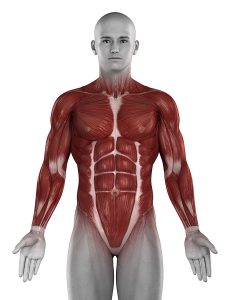
Diagnosis
Physiotherapy diagnosis
Our physiotherapists are experts when it comes to assessing and treating rotator cuff injuries. We will always start by asking you to tell us your story of what happened and what you can and can’t do. This gives us a big picture of the problem, and from there we will start to break it down into manageable pieces.
Now we will use specific tests to isolate each rotator cuff muscle and also test their function as a group. This allows us to start identifying any other factors that might be contributing to your pain. We also test the stability of your shoulder to assess the underlying ligaments and other soft tissue structures.
Once we have a diagnosis, we can start with a rehabilitation program for your specific problem.
X-rays
If you had a traumatic injury like a fall, X-rays are helpful to rule out fractures in the area. However, X-ray imaging only shows the bony elements, so it can’t exclude or confirm rotator duff muscle tears.
Diagnostic ultrasound
Diagnostic ultrasound, or sonar, is often our first choice to assess rotator cuff muscle injuries. A sonar can identify which muscles are injured, and measure the length and depth of tears. If we suspect a large tear or multiple tears, we will refer for sonar after our own clinical testing to determine the extent of the injury.
MRI
An MRI is an expensive test that shows all the structures around your shoulder, both superficial muscles and deep joint surfaces. This imaging is rarely necessary in uncomplicated rotator cuff strains, unless we suspect shoulder labrum tears or a structural instability. As this is a very expensive route, and you need to be referred by an surgeon, we will only suggest that an MRI is needed if it will change the management plan.
Why is the pain not going away?
Muscle imbalances
When you have shoulder pain, your body will find all sorts of ways to get away from the pain. The easiest, and most common, way is to change the way your shoulder moves. That means not using certain muscles, usually the rotator cuff due to pain, and rather using other muscles. This might seem like a good idea, to rest the injured muscles. Unfortunately, if you don’t use it you lose it, is very appropriate when it comes to muscles. The unused muscles become weaker and atrophy, or get smaller, while the other muscles get tight due to overuse. This vicious cycle doesn’t reverse itself, so what started as a rotator cuff muscle strain now turns into a shoulder impingement, neck pain or upper back muscle spasm. The original injury might get better, but you won’t be able to tell because of all the other problems starting.
Poor movement patterns
They are often the reason for an altered position of your shoulder joint. The movement pattern changes due to poor posture, pain or muscle weakness. This change in position increases pressure on your already irritated or weak rotator cuff muscles. Increased pressure leads to inflammation and swelling, taking up even more space that your shoulder doesn’t really have to spare.
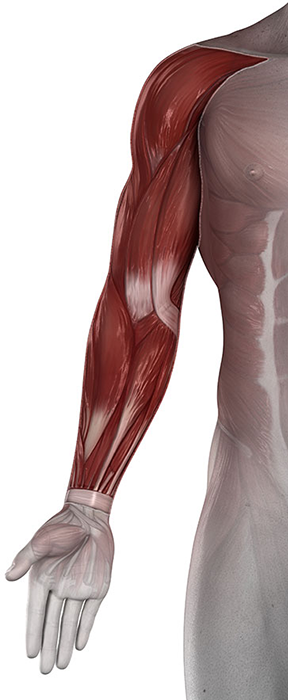
Problems we see when patients come to us with Rotator Cuff injuries
“Everything hurts”
Your body is very good at getting things done. Pain when you lift your arm? No problem. Your shoulder will automatically change gears, finding another way to get the job done while avoiding the pain. Although the change in gears avoids using the injured structures, it means you’re using different muscles around your shoulder.
This is a helpful strategy in the first couple of days after an injury, but by the time you come to see us for your shoulder pain, these muscles have taken over and are already stiff and painful. Instead of going back to the original pattern, it’s was much less effort for your shoulder to just keep using these other muscles. The small, stabilizing muscles around your shoulder keep getting weaker and less active, while the big, outer muscles get tight and tired from doing all the work. Eventually, your shoulder, neck, upper back and elbow become sore and you can’t even remember where it started.
When you have a small number of torn muscle fibers, your body’s natural healing process kicks in to recover. This takes the form of inflammation around your rotator cuff muscles, which is the first step of normal healing. The bad news is that the swelling narrows the space at the top of your shoulder even more, causing a pinch and friction on your rotator cuff tendons.
This constant irritation and friction over the tendons means that the normal healing process has to start over and over again. Over time, your rotator cuff tendons become frayed and stiff. A stiff tendon can’t handle extra tension, so every time you use lift your arm, the tendon becomes even more stiff and sore. If left untreated, a tendinopathy significantly increases your risk of a rotator cuff tear or even a complete rupture.
Everyday activities like blow drying your hair, picking up the kettle to make a cup of coffee will be painful at this stage.
Physiotherapy treatment
Resting your injured shoulder is helpful in the early days after your rotator cuff muscle strain. On the other hand, too much rest leads to whole range of other problems like shoulder stiffness, neck stiffness, muscle weakness, tightness and impaired proprioception.
Your physiotherapist is an expert when it comes to the balance between rest and activity. The key is finding the right amount of activity for you specific problem and stage of healing. In the first week after your injury, this usually means doing as much as you feel comfortable with and not pushing through pain.
As medical professionals, physiotherapists have a wide range of treatment modalities and techniques to help you through each phase of healing. These include modalities like dry needling, ultrasound and laser to stimulate healing, strapping to protect your injured shoulder, soft tissue mobilization and myofascial release to treat tightness and restrictions and, of course, exercise therapy to make sure your rotator cuff muscles are ready for your day to day activities.
Phases of rehabilitation
1st Phase: Pain relief and protection
The first priority is addressing your pain and inflammation. Fortunately, a physiotherapist has a whole range of treatment modalities that focus specifically on pain relief. Our main goal during this phase is to get your pain to a point where you can start moving again. Movement is medicine, so the sooner we start adding gentle movements, the better.
At the end of this phase your pain should be under control, shouldn’t wake you up at night and settle within 20 minutes of getting up in the morning. You should also be able to lift your arm around waist level with minimal pain.
2nd Phase: Restoring movement and motor control
When you are in pain, your shoulder will try to protect itself by avoiding movement and holding still. Unfortunately, the phrase “if you don’t use it, you lose it” is very fitting when it comes to muscles and movement. In this phase of your rehabilitation program, we start adding movement, motor control and muscle activation. The initial exercises focus on pain free movement and correcting bad habits you’ve learnt due to pain.
At the end of this phase your should be able to lift your arm to shoulder height with minimal pain. When you get up in the morning you will notice some muscle tightness when you start to move, but not pain.
3rd Phase: Shoulder stability and strengthening
At this stage most of the pain in your shoulder should have resolved. This is when many patients stop treatment, because the pain is gone. These are also the patients who have to restart the whole process once or twice a year. The pain is only a symptom of a deeper problem.
In this phase, our focus shifts to strength and endurance. Without adequate muscle strength and stability, your shoulder pain will settle for awhile, but the pain will always pop up once you start using it again.
At the end of phase 3, you should have full range of movement. Lifting and carrying everyday objects like school bags and groceries shouldn’t cause any pain. Most of the time, you should actually forget that you had a sore shoulder.
4th Phase: Return to activity and conditioning
By now your shoulder isn’t sore anymore and you hardly notice any tightness which leads us into the conditioning phase. Even when we don’t have pain, muscles need time to adapt and get stronger. That means the pain free window is the ideal time to build resilience around your shoulder complex. Our focus during this phase will be compound exercises, in other words bigger movements involving more than just your shoulder. We also add more resistance, loading your shoulder to make sure it can handle anything you throw at it.
Healing time
Depending on the severity, a rotator cuff muscle tear generally needs 4-6 weeks to heal. By 6 weeks you should be back to all your daily activities and starting sports participation. We will monitor and guide you up to this point and beyond, to make sure that your rotator cuff can handle the extra tension.
The number of sessions required depends on the severity of your rotator cuff strain. In most cases we need to see you twice a week for the first two weeks, then one treatment session for the next two weeks. The interval in between sessions keeps getting longer as your shoulder gets stronger and the exercises become more challenging. In the later phases of treatment, sessions will be about 4 weeks apart to monitor your progress, adapt your exercise program and catch any complications or niggles before they interfere with your recovery.
Other forms of treatment
- Medication from your GP doesn’t fix the problem, but is useful for pain management in the early stages of treatment.
- Cortisone injection is not recommended for rotator cuff injuries. This medication weakens the soft tissue around your shoulder, leading to a real risk of further injury and even a full tendon rupture.
- A sling to rest your arm for 2-3 days in the acute phase. Just remember, movement is medicine, so the sling should never be your go to solution.
- Biokineticists are a valuable part of the team in the last stage of rehabilitation. By then, you should have full mobility of your shoulder and minimal pain.
- Chiropractic adjustment isn’t indicated for rotator cuff tears and could actually make the problem worse.
- There is limited evidence that shockwave therapy might be useful for some muscle injuries, but this treatment in isolation will not be effective for your rotator cuff muscle strain.
- Stretching your shoulder in the wrong stage of healing will also do more harm than good. All stretches are not equal when it comes to treating injuries, so be very careful with what you find on social media.
Is surgery an option?
Surgical options for rotator cuff muscle strains should be reserved for complete ruptures or large tears causing shoulder instability. These options include a rotator cuff repair, which involves keyhole (arthroscopic) surgery to anchor the ruptured tendon back to the bone. Aftercare is usually using a sling for about 6 weeks after surgery, and you are not allowed to use the arm muscles at all. Following the surgeon and physiotherapist’s guidance after surgery is absolutely crucial to protect the repair and limit your risk of long-term complications. Full recovery, meaning from the day of surgery and completing your rehabilitation program to get back full, comfortable use of your arm, takes about 6 to 9 months.
Non-surgical management, like physiotherapy, may seem like a long road to recovery, but don’t be fooled into thinking that surgery is a quick fix…
What else could it be?
- Shoulder impingement: pain is located at the top of your shoulder and gets worse with any lifting activities.
- SLAP lesion: a deep, aching pain in your shoulder, often accompanied by a painful click with certain movements.
- Shoulder bursitis: severe pain all around your shoulder when this condition is acute, and much worse lying on the painful side.
- Shoulder arthritis: shoulder stiffness in the morning that eases with gentle movement.
- Rotator cuff tendinopathy: pain and stiffness when you start activity, that settles after your warmup.
Also known as
- Pulled shoulder muscle.
- Rotator cuff muscle tear.
- Pinched shoulder muscle.
- Supraspinatus tendinitis.
- Shoulder muscle injury.

